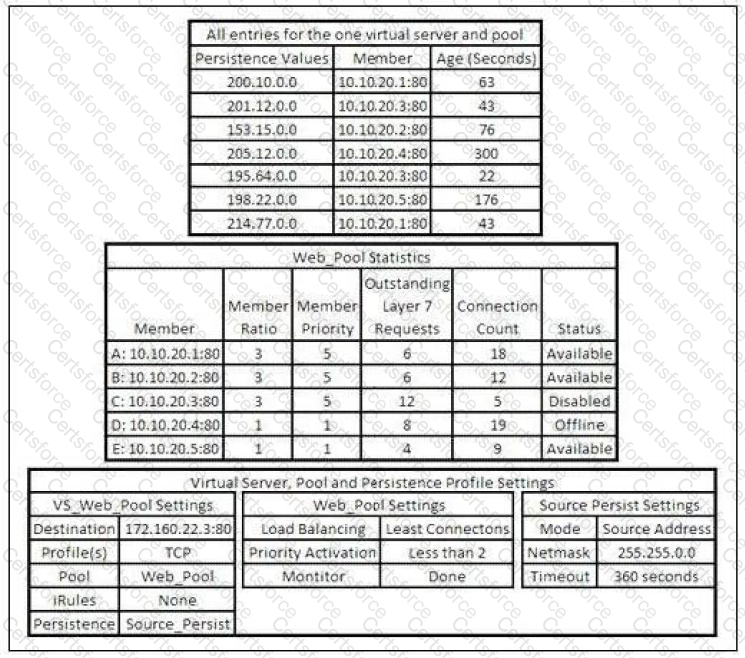A BIG-IP Administrator configures remote authentication and needs to make sure that users can still
login even when the remote authentication server is unavailable.
Which action should the BIG-IP Administrators in the remote authentication configuration to meet this
requirement?
A 8IG-IP Administrator configures a Virtual Server to load balance traffic between 50 webservers for an
ecommerce website Traffic is being load balanced using the Least Connections (node) method.
The webserver administrators report that customers are losing the contents from their shopping carts
and are unable to complete their orders.
What should the BIG-IP Administrator do to resolve the issue?
A BIGJP Administrator needs to load a UCS file but must exclude the license file. How should the administrator perform this task?
A virtual server is defined using a source address based persistence profile. The last five connections were A, B, C, A, C . Given the conditions shown in the graphic, if a client with IP address 205.12.45.52 opens a connection to the virtual server, which member will be used for the connection?

The interface 1.1 of the BIG-IP device has been connected to a link dedicated to traffic on VLAN 120. What should the BIG-IP Administrator do to receive traffic from the VLAN?
Refer to the exhibit. The BIG-IP Administrator needs to avoid overloading any of the Pool Members with
connections, when they become active.
What should the BIG-IP Administrator configure to meet this requirement?
The BIG-IP Administrator needs to ensure the correct health monitor is being used lor a new HTTP pool
named P_example.
Where should the BIG-IP Administrator validate these settings in the Configuration Utility?
A BIG-IP Administrator runs the initial configuration wizard and learns that the NTP servers were invalid. In which area of the Configuration Utility should the BIG-IP Administrator update the list of configured NTP servers?
Refer to the exhibit.

How many nodes are represented on the network map shown?
A new BIG-IP VE is deployed with default settings. The BIG-IP Administrator completes the setup utility in the Configuration Utility. The internal self IP address fails to respond to a ping request. What is a possible cause of this issue?